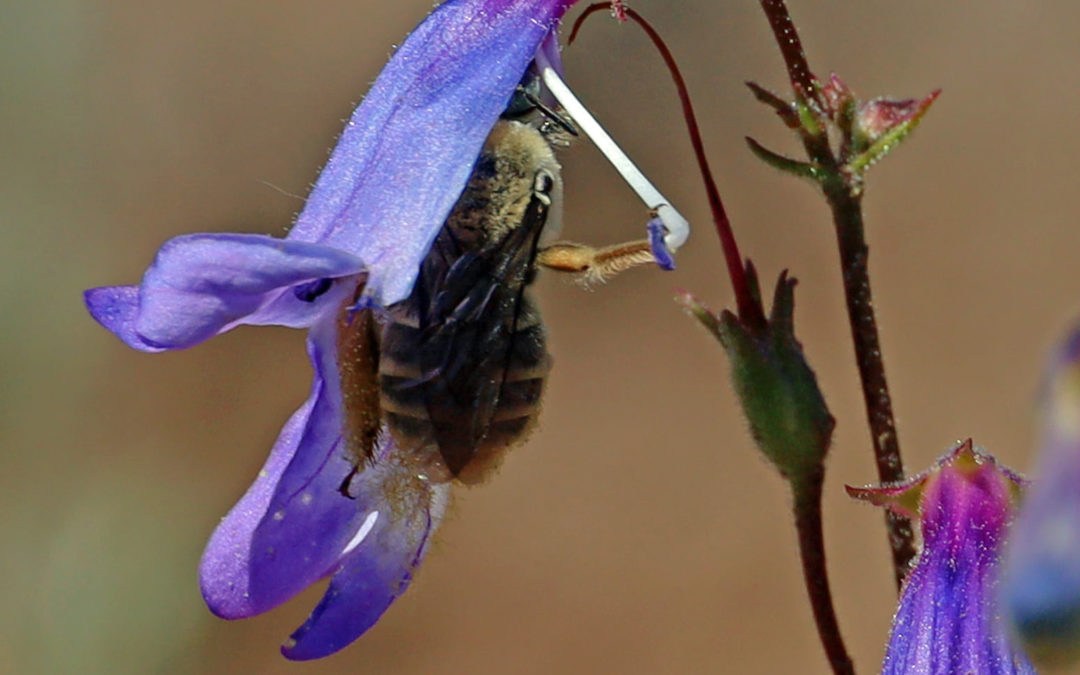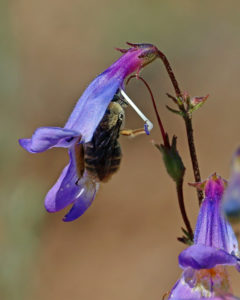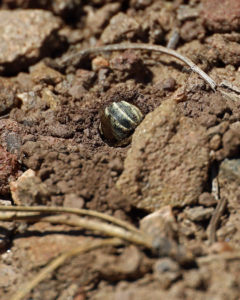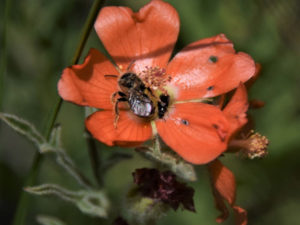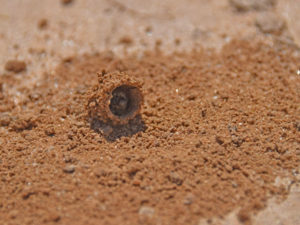While hiking near Bonanza, Colorado we found a large nest of ground nesting native bees. This is always a very exciting thing to observe. They fly so fast and dive into the holes they have dug. Some are still digging, some are stuffing pollen and nectar into the nest holes. I could observe it for hours. I also found some of the same bees nearby pollinating and collecting pollen/nectar from a Penstemon- Penstemon griffinii. Here is some wonderful information about ground nesting bees from the Xerces Society:
“Birds do it. Bees do it. Like birds, bees lay eggs in nests. Some even “feather” their nests with plant material or the fluff from downy leaves. 70% of bees nest in tunnels in bare earth, 30% lay their eggs in cavities – holes in dead wood, hollow stems, or even cracks in concrete or stone (only honey bees form hives.) “Both ground nesting and cavity nesting bees create a ball from pollen and nectar on which they deposit an egg in a “bee nursery” known as a brood chamber. Ground nesting bees form tunnels in the ground with multiple brood chambers. Cavity nesting bees find an existing tunnel in the form of a hole in dead wood or the hollow stems of certain plants. They create brood chambers starting at the back of the tunnel and working their way to the front, sealing each chamber as they go with mud or bits of plant material. Bumblebee species nest in small colonies where worker bees attend to the nest. They usually build their nest in dry, protected and hidden cavities below ground, such as an abandoned rodent burrow, under piles of wood or brush, under sheds or sometimes in old birdhouses.
When we keep a clean and tidy garden, we’re frequently eliminating natural materials and features that would otherwise provide nesting habitat for bees and other insects. It may sound too good to be true – but here are some ways you can provide much needed habitat for bees and other insects while saving time, money, and energy”.
Five ways to increase nesting habitat for bees:
https://xerces.org/blog/5-ways-to-increase-nesting-habitat-for-bees
Native bee- Diadasia sp. on Sphaeralcea sp. commonly known as Cowboy delight on the eastern prairie in Otero County, Colorado. This bee is solitary and makes underground nests in the soil. I have also included a photo of the female bee exiting its ground nest. only pic is of the periscope entrance.
Carol English
Native Plant Master
Editor’s note: Bee Basics, an excellent short publication on Native Bees, written in simple language and featuring wonderful illustrations can bee read online at:
https://efotg.sc.egov.usda.gov/references/public/SC/Bee_Basics_North_American_Bee_ID.pdf
Bee Basics can be purchased the most reasonably from the Pollinator Partnership: https://www.pollinator.org/shop/books

